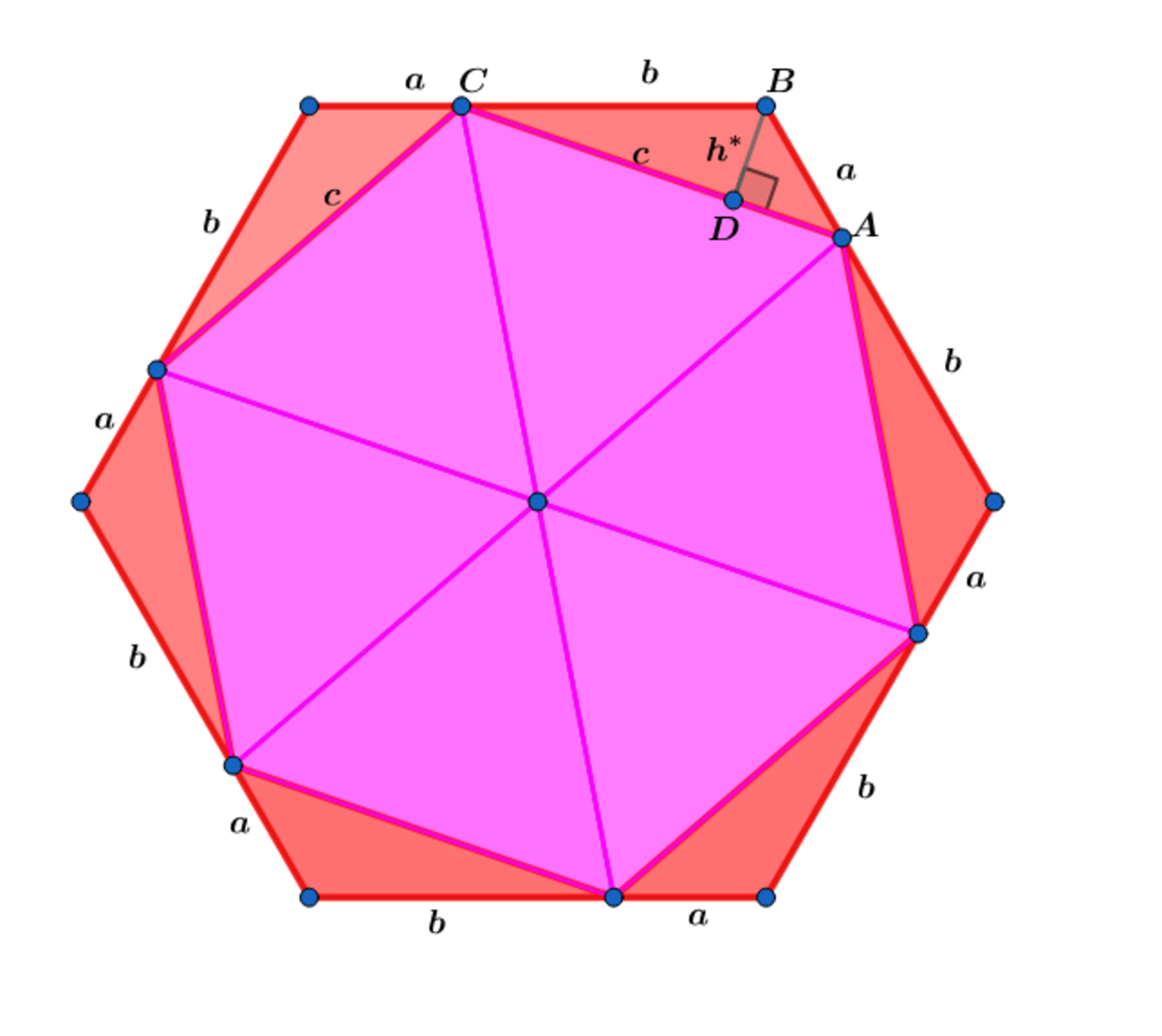It's all Hexagons

If is the height of and a side of the inscribed regular hexagon and the area of the larger hexagon is , find the sum of the areas of the red triangles.
The answer is 216.
This section requires Javascript.
You are seeing this because something didn't load right. We suggest you, (a) try
refreshing the page, (b) enabling javascript if it is disabled on your browser and,
finally, (c)
loading the
non-javascript version of this page
. We're sorry about the hassle.
Using the law of sines on △ A B C we obtain:
4 h ∗ = sin ( α ) a ⟹ sin ( α ) = 4 h ∗ a ⟹ h ∗ = 4 h ∗ a b ⟹ b = a 4 h ∗ 2 .
Using the law of cosines ⟹ a 2 + a b + b 2 = 1 2 h ∗ 2 ⟹ a 2 + 4 h ∗ 2 + a 2 1 6 h ∗ 4 = 1 2 h ∗ 2 ⟹ a 4 − 8 h ∗ 2 a 2 + 1 6 h ∗ 4 = 0 ⟹
( a 2 − 4 h ∗ 2 ) 2 = 0 ⟹ a = 2 h ∗ ⟹ b = 2 h ∗ ⟹ a + b = 4 h ∗ ⟹
the area of the larger hexagon A = 2 4 3 h ∗ 2 = h ∗ 4 + 4 3 2 ⟹ h ∗ 4 − 2 4 3 h ∗ 2 + ( 1 2 3 ) 2 = 0 ⟹ ( h ∗ 2 − 1 2 3 ) 2 = 0 ⟹ h ∗ 2 = 1 2 3 ⟹ h = 2 4 2 7
⟹ The sum of the areas of the red triangles ∑ j = 1 6 ( A r e d ) j = 6 ( 2 1 ) ( 2 3 h ∗ 2 ) = 6 3 h ∗ 2 = 6 3 ( 1 2 3 ) = 6 ∗ 1 2 ∗ 3 = 2 1 6 .